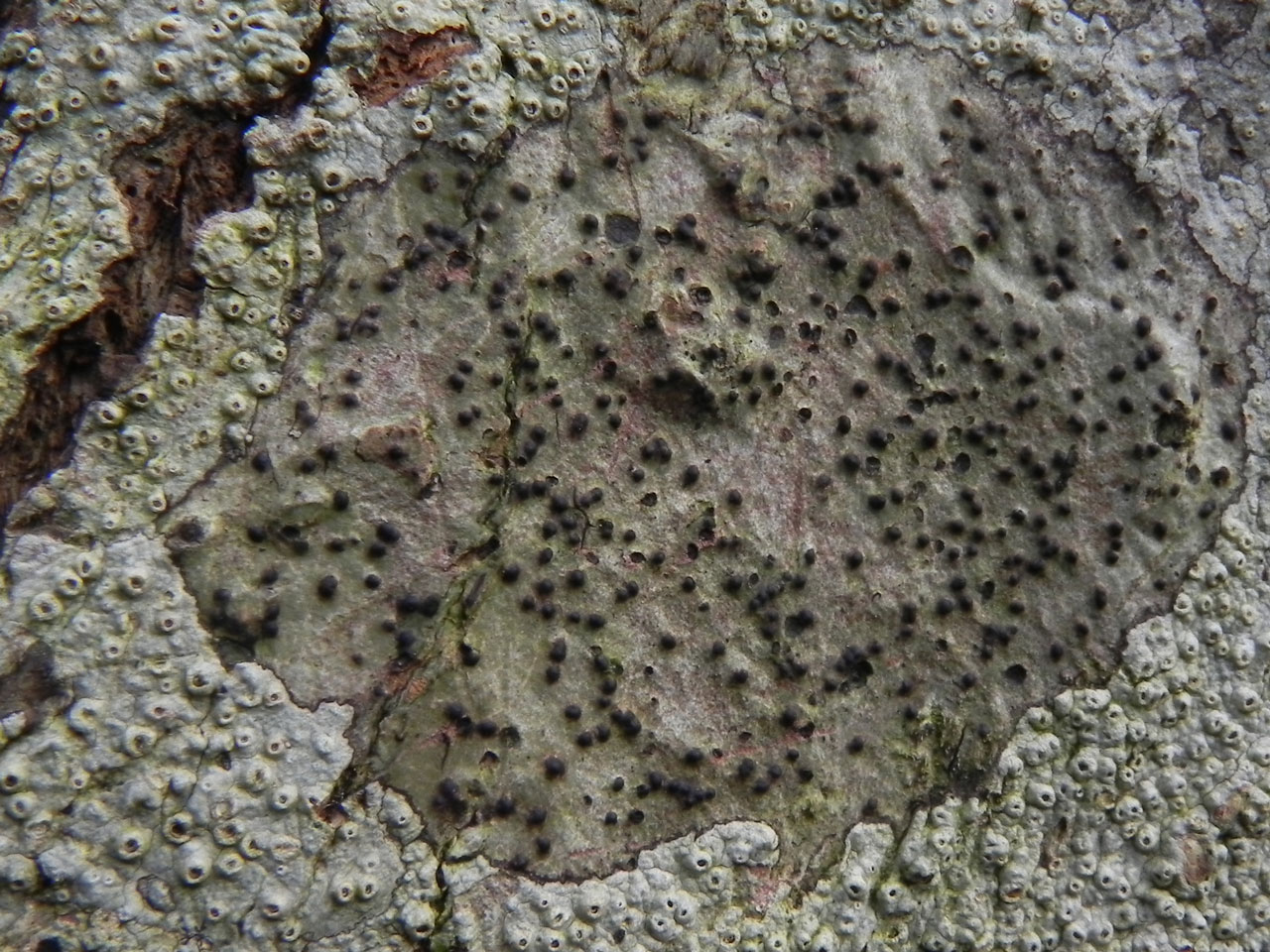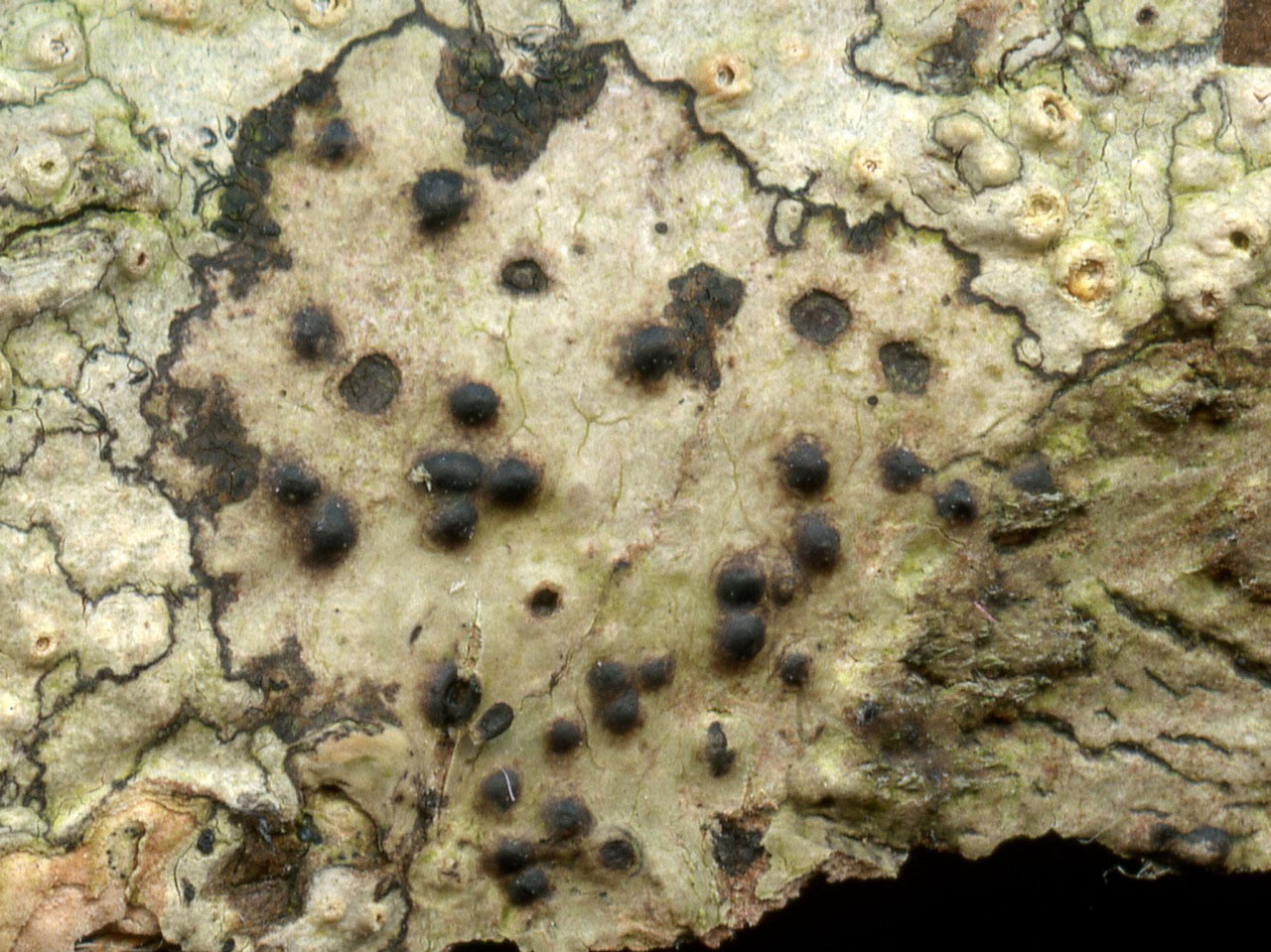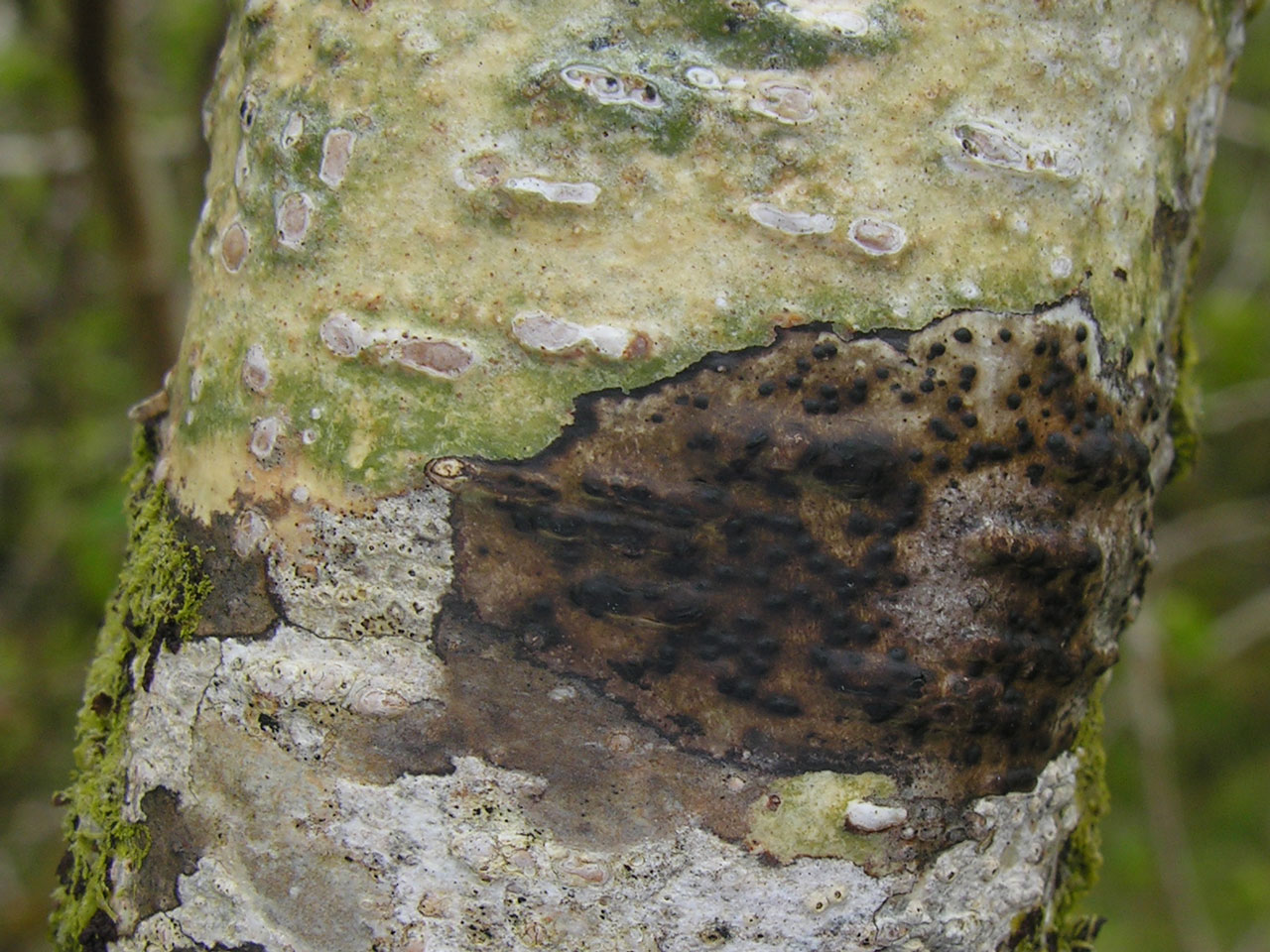Until recently not well known and easily overlooked among other Pyrenula species. The most distinctive feature are the eccentric to lateral ostiole, but this needs close examination. It is best spotted in the field by the distinct range of thallus colours; pale yellow-grey, sometimes stained dark brown near the perithecia. Some forms are easily overlooked as P. occidentalis, but this has an inspersed hymenium. A scarce species of temperate rainforest, often rather infrequent in occurrence but sometimes frequent in ravines.
Thallus immersed, pale yellow-grey, sometimes stained dark brown near the perithecia; pseudocyphellae absent. Perithecia 0.54–0.8 mm diam., forming projections on the thallus; ostiole excentric to lateral; hymenium not inspersed with oil droplets, anthraquinones absent (K–). Ascospores (17–) 20–25 (–27) × (7.5–) 8–10.5 (–11.5) μm, 3-septate. Thallus C–, K–, Pd–, UV– (lichen substances absent).
The British populations deviate from most material in that they consistently have lateral ostioles, a character that is usually invariable within Pyrenula species. Possibly conspecific with P. microtheca, which is known from N. & C. America. Distinguished from all British and Irish species, except P. hibernica, by the lateral ostioles. However, the lateral ostioles are difficult to spot in the field and can be central on some perithecia, thus best spotted in the field by the distinct range of thallus colours. Some forms are easily overlooked as P. occidentalis, but this has an inspersed hymenium.
On smooth bark in humid woodlands, possibly confined to temperate rainforests.

Rare, W. Wales, N.W. England, W. Scotland, S.W. Ireland but under-recorded.
A very localised species confined to humid oceanic woods and sometimes very locally abundant in ravine woodland. As with other oceanic species vulnerable to both under and over grazing, the former compromising the longterm existence of woodland, the latter leading to woods becoming too shaded.
Britain: Near Threatened
Scotland: Priority Taxon for Biodiversity in Scotland
Wales: not assessed
Cannon, P., Coppins, B., Aptroot, A., Sanderson, A. & Simkin, J. (2023). Perithecial genera I, including Acrocordia, Alloarthopyrenia, Anisomeridium, Antennulariella, Arthopyrenia, Celothelium, Cyrtidula, Dichoporis, Eopyrenula, Julella, Leptorhaphis, Leptosillia, Lithothelium, Mycomicrothelia, Mycoporum, Naetrocymbe, Pyrenula, Rhaphidicyrtis, Sarcopyrenia, Swinscowia and Tomasellia. Revisions of British and Irish Lichens 37: 1-59.
Text by Neil A Sanderson





